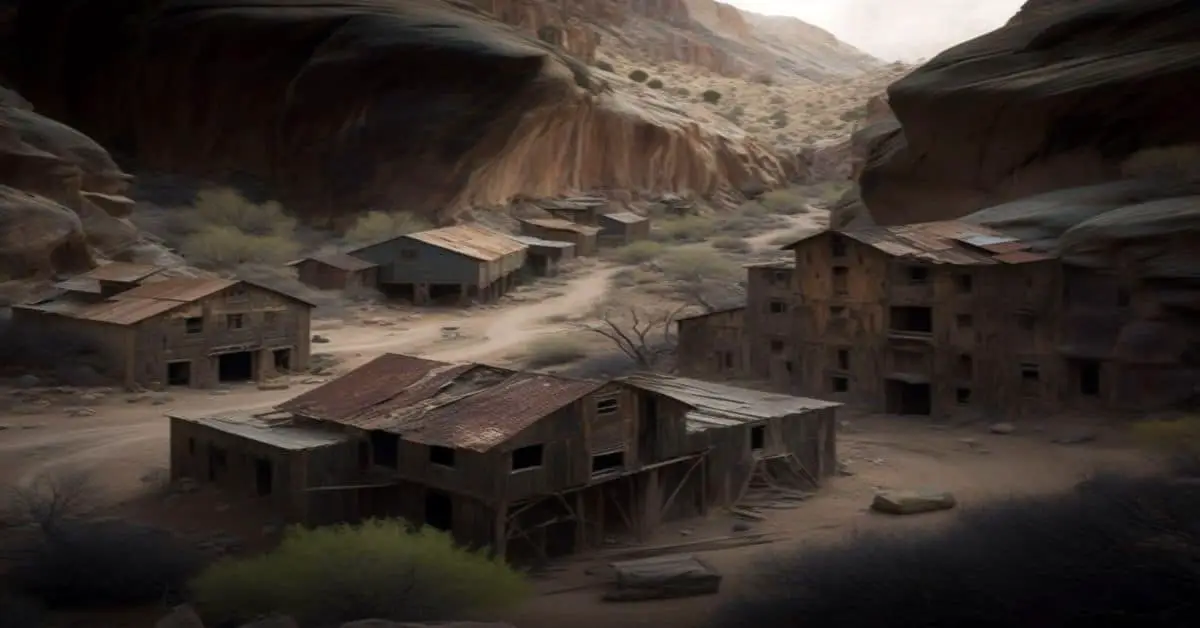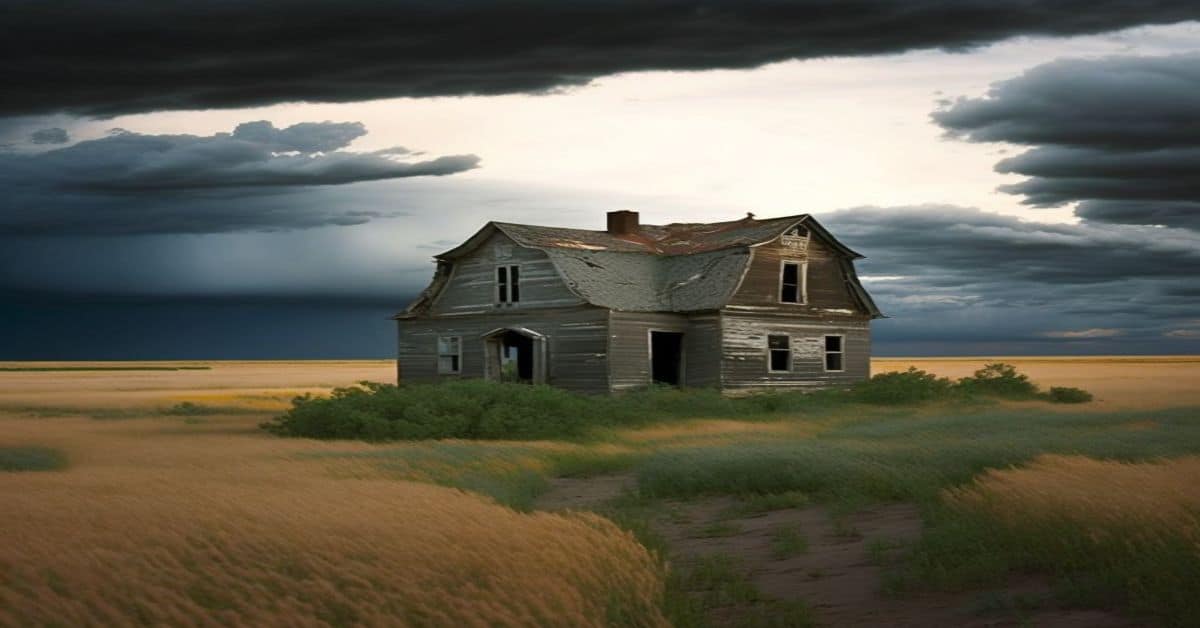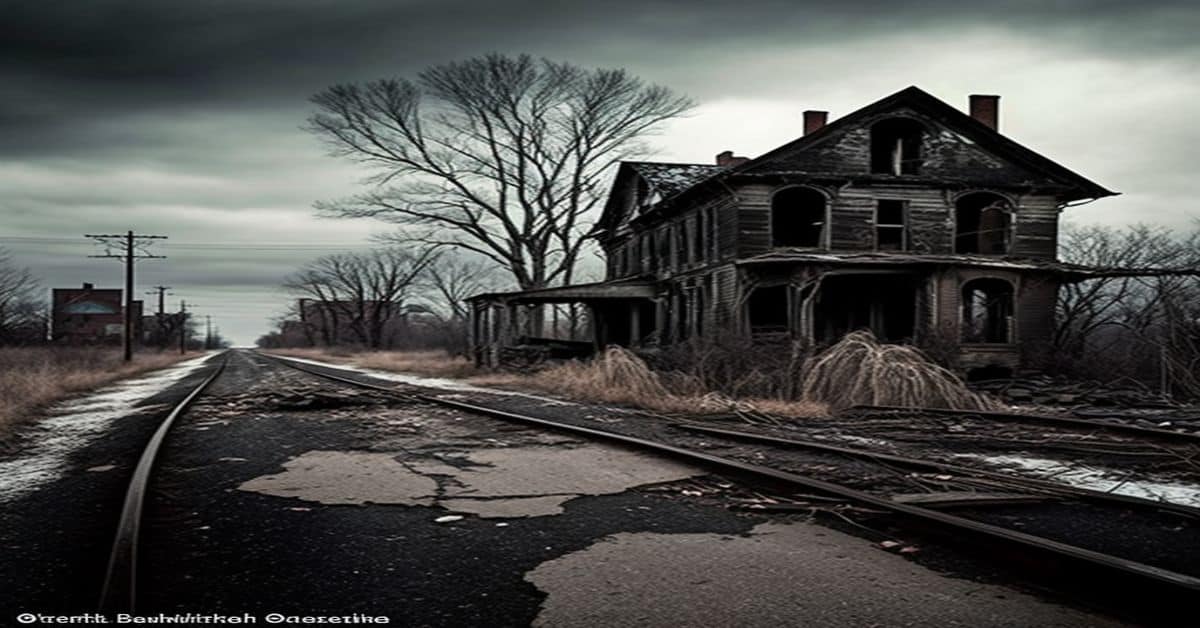Once a thriving community in Dimmit County, Texas, Catarina was known for its abundant water supply and long crop-growing season, making it an attractive location for farmers. The town boasted paved streets, a grand hotel, and a new school, all contributing to its success.
However, the Great Depression hit the town hard, and the artesian wells that had provided its water dried up, leaving the community struggling to survive. Today, Catarina is a partial ghost town with only a few dozen residents left, and its ruins remind of the town’s rise and fall.
The story of Catarina’s rise and fall is a metaphor for the boom-and-bust cycle many towns and cities experience throughout history. As the town’s fortunes rose and fell, so did its residents’ hopes and dreams.
While the town may no longer be the bustling community it once was, its legacy lives on through the stories of those who lived and worked there. This article will explore the history of Catarina, from its boom years to its decline, and examine how it went from a thriving community to a ghost town.
Key Takeaways
- Catarina was a thriving community in Dimmit County, Texas, known for its abundant water supply and long crop-growing season, with a population of a thousand people by 1930.
- The Great Depression hit the town hard, and the artesian wells that had provided its water dried up, leaving the community struggling to survive.
- Catarina’s history serves as a reminder of the importance of careful planning and management for the success of any community, highlighting the importance of diversifying the local economy and not relying on a single industry or resource.
- Despite its current status as a partial ghost town, there have been efforts in recent years to revitalize the community, with some residents working to attract new businesses and investment.
History of Catarina
The history of Catarina, Texas, involves its growth into a boom-and-bust town. The town reached a thousand people by 1930 due to its abundant water supply and long crop-growing season. Catarina was a planned community to accommodate tens of thousands of people. The town had paved streets, a new school, electricity and telephone service, a grand hotel, and more.
However, the Great Depression hit hard, and the artesian wells dried up, resulting in the town’s decline. Catarina’s abundant water supply significantly affected its growth and prosperity. The town was sold for this very reason, and it was planned to be a thriving community. Unfortunately, the town’s success was short-lived, and it became a victim of the economic downturn during the Great Depression.
The drying up of the artesian wells was a severe blow to the town’s economy, which never fully recovered. Despite its decline, Catarina’s history serves as a reminder of the importance of careful planning and management for the success of any community.
Boom and Bust
Like a rollercoaster reaching its peak, Catarina experienced a rapid ascent, with a population of a thousand people by 1930. The town was a planned community for tens of thousands, boasting modern amenities such as paved streets, a new school, electricity and telephone service, and a grand hotel.
However, the Great Depression hit hard, and the artesian wells dried up, causing the town’s downfall. The impact on the community was devastating as many residents were forced to leave for new opportunities. The dreams of a prosperous town were abandoned, and only a few dozen residents remain in Catarina today.
The rise and fall of Catarina holds valuable lessons for other towns and communities. The town’s experience highlights the importance of diversifying the local economy and not relying on a single industry or resource. Additionally, proper planning and preparation can help communities weather economic downturns and prevent similar collapses.
Despite its abandoned dreams, Catarina is a cautionary tale for other communities to learn from and avoid similar fates.
Current Status
As of 2008, Catarina has only two or three dozen residents remaining, and the ruins of several buildings, including a grand hotel and a high school, stand as a reminder of its past ambitions. The town once had paved streets, electricity, and telephone service, and was planned to accommodate tens of thousands of residents. However, the Great Depression hit hard, and the artesian wells dried up, leading to the town’s decline.
Despite its current status as a partial ghost town, Catarina still attracts visitors interested in exploring its ruins. The remains of the grand hotel are particularly popular, as it was once a magnificent structure with elegant architecture.
Additionally, there have been efforts in recent years to revitalize the community, with some residents working to attract new businesses and investment.
While Catarina may no longer be the bustling town it once was, its history and potential for rebirth make it an intriguing destination for those interested in the past and future of small towns in America.
Frequently Asked Questions
What was the primary crop grown in Catarina during its boom period?
During its boom period, the primary crop grown in Catarina was cotton. The town’s agriculture was significant to the region and contributed to its growth in the early 20th century.
How did the Great Depression impact the town’s economy?
The Great Depression caused significant economic turmoil in Catarina, decreasing the town’s population and significantly impacting residents’ livelihoods. The government’s response to the crisis is not mentioned in the given information.
Are there any plans to restore or revitalize the remaining buildings in Catarina, Texas?
The potential for Catarina’s remaining buildings to be restored or revitalized is unclear. However, potential discussion ideas include exploring funding opportunities and eco-tourism potential. The fate of the town remains uncertain.
What was the population of Catarina at its peak, and how does that compare to its current population?
Catarina, a former boom-and-bust town in Dimmit County, Texas, had a peak population of 1,000 in 1930. As of 2008, it had only two or three dozen residents, demonstrating a significant decline in population and historical significance.
Have any notable events or sightings been reported in Catarina, Texas, since it became a ghost town?
No notable events or sightings have been reported in Catarina since it became a ghost town. However, the town’s historical significance and ruins, including a grand hotel and high school, offer potential for tourism and exploration.


